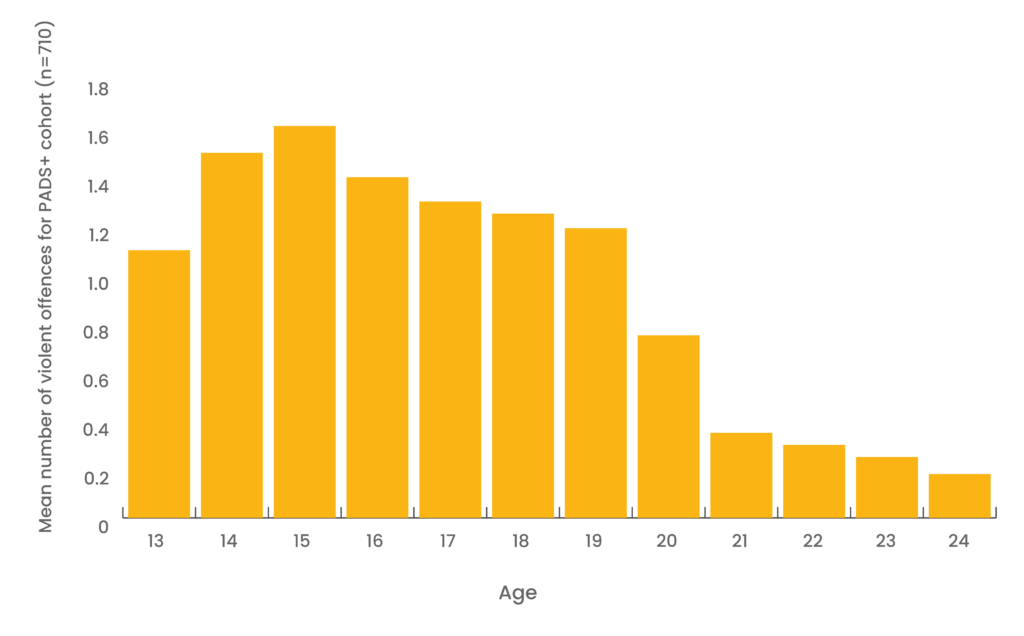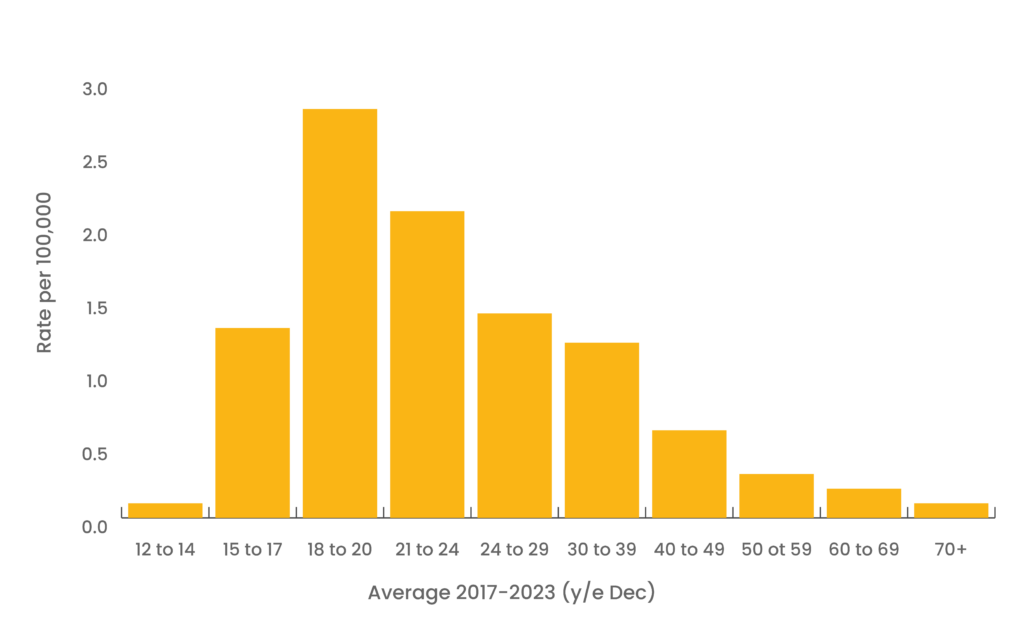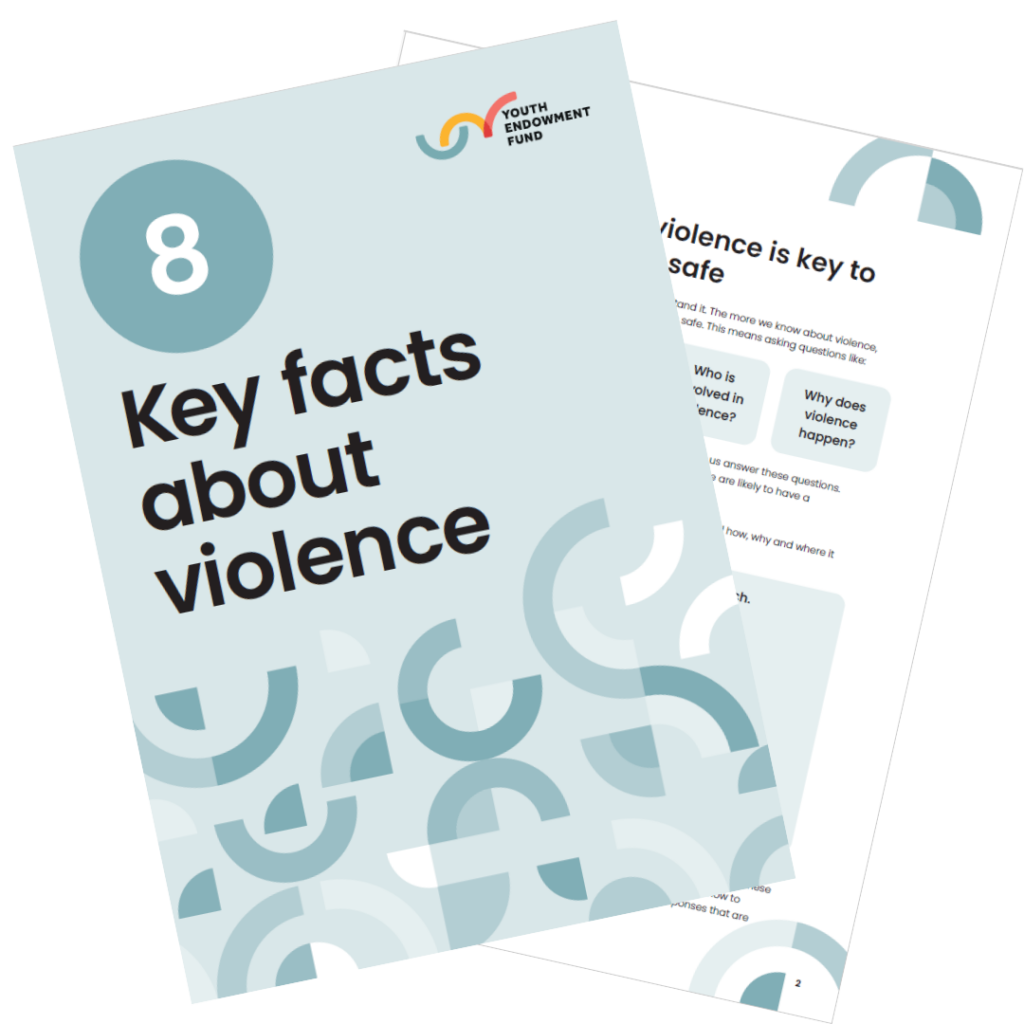
Key Facts About Violence

Key Facts About Violence
There are many possible explanations for why people are less likely to be involved in violence as they get older. It could relate to psychological and physiological changes such as improved impulse control or better decision-making abilities. Becoming an adult is also associated with changes in our relationships and how we are treated by society which could support desistance. As we get older, we tend to form more stable personal relationships and gain more responsibilities, such as a job or children to care for.
While the general pattern of the age-crime curve seems consistent, the age at which the curve peaks and the rate of decline after the peak will vary across contexts, populations and crime types. The charts below present data demonstrating slightly different age-crime curves for different violent offences in different contexts. The figure below presents data from a study in Peterborough which suggests that total violent offences peaked at age 15.
Age and violent offending in the Peterborough Adolescent and Young Adult study

Figure 3 shows the murder rate for different age groups in recent years across England and Wales. It suggests the murder rate peaks in early adulthood (18-20), which is slightly later than the violent offending peak in the Peterborough study.

We should remember that the age-crime curve describes the average pattern across a large group of people. Not everyone follows the same trajectory. Individual experiences, opportunities, and choices will mean individual people have very different stories.
Most of the time, when children are involved in crime it’s for relatively minor offences. The vast majority of children won’t become involved in more serious violent offending. It’s important that, when children commit minor offences, the response is proportionate and informed by the evidence. There is evidence that experiences of the formal justice system, like going to court or being sent to custody, can increase the risk that children reoffend. This is why diversion is such an important approach. Diverting children from court to positive support can reduce the risk that they reoffend and the severity of their offence if they do. If children do commit minor offences, diverting them away from the formal criminal justice system to other support could have a big impact on the rest of their lives.
Unfortunately, a small minority of children and young adults can become involved in very serious and violent crime. It’s essential that systems are in place so that we notice when this happens and can act to safeguard these children and young adults.

“When we see statistics about crime amongst children and young people, it’s easy to dehumanise the problem. I think we have to ask why it is happening. There are no excuses for violent behaviour, but when we start to understand, it becomes less of a surprise.
When we say that many people grow out of crime, they literally do, partly because of changes in our bodies and minds that mean we become more able to self-regulate and make better decisions.
It saddens me how overrepresented young people from certain backgrounds are in the justice system. This includes those who have experienced trauma and victimisation, who have been in care or excluded from school. Those with speech, language and communication needs, mental health needs, accommodation needs, parenting needs. So much is usually going on beyond the statistic that brought someone into contact with the system.
How can we support children, young people and young adults to have a positive identity and idea of themselves, so that they can find their place in society?’“
Get your copy of our latest research resource on the key facts about violence.

NEXT FACT
